How we offset emissions
Which sources of emissions are recorded?
When determining our operational greenhouse gas emissions, we follow the guidance of the Greenhouse Gas Protocol (GHG Protocol) as the internationally recognised standard of climate auditing for companies. It provides for systematic recording of the main greenhouse gases covered by the Kyoto Protocol (CO2, CH4, N2O, HFCs, PFCs, SF6, NF3). In order to be able to compare their impacts on the climate, they are converted into what are referred to as CO2 equivalents (CO2e). Methane (CH4), for example, has a 100-year global warming potential around 28 times that of carbon dioxide (CO2). The emission of one tonne of CH4 is therefore equivalent to 28t CO2e.
How does the offsetting scheme work?
The basic idea of offsetting is simple: GHG emissions produced at one place in the global (economic) system can be offset by climate action projects elsewhere that demonstrably reduce GHG emissions. At what place a greenhouse gas is released into the atmosphere is irrelevant to global warming. Of relevance are merely the quantity and equivalent climate impact.
Project example
A climate project supports households in acquiring energy-efficient cookstoves which they would otherwise not be able to afford, thereby reducing the need for firewood and lowering the associated GHG emissions. This climate impact is calculated, independently reviewed and certified as offset. Such projects can also strengthen the region’s sustainable development. More efficient and thus more climate-friendly stoves, for example, produce less smoke and thereby contribute to better health outcomes.
What is being offset?
We have been offsetting our domestic emissions since 2013 and our emissions outside Germany since 2020. More information on GIZ’s emissions can be found in the Climate and Environmental Report .
What quality standards do we apply to projects?
We critically assess the quality and effectiveness of carbon offset projects. They protect the climate only if the GHG reduction would not have occurred without the project (additionality). Furthermore, they must not lead to negative effects on humans and nature but instead should offer positive co-benefits. That is why we set ourselves high quality standards for the purchase of certified emission reductions (CERs). We follow the procurement criteria which the German Federal Government applies to offsetting its business trips . Accordingly, we only purchase CERs from climate projects under the Clean Development Mechanism (CDM), the United Nations Framework Convention on Climate Change (UNFCCC) and its follow-up mechanism. One CER equals one tonne of CO2e.
Wherever possible, we also support projects in the least developed countries (LDCs) as well as bundled micro projects (Programme of Activities, PoA) whose cost structure puts them at an economic disadvantage compared with larger projects. It is often precisely these micro projects that provide the greatest co-benefits, however. They include projects aimed at strengthening regional labour markets, protecting human health or preserving biodiversity and natural habitats, for example. In addition, since 2019 we have procured only CERs that were verified against the criteria of the Gold Standard Foundation and therefore demonstrably make a particular contribution to sustainable development.
Finally, but not least, some exclusion criteria apply to project tenders. Among other things, we do not support illumination projects using lamps containing mercury, projects utilising biogas from palm oil mills or projects for the biological or geological sequestration of CO2.
Which climate action projects have been selected?
Several projects from the latest rounds of tenders are described in more detail below.
Locations of carbon offset projects
- Nigeria
- Rwanada
- Malawi & Mozambique
- Zambia
- Nepal
- China
Clean and affordable household biogas
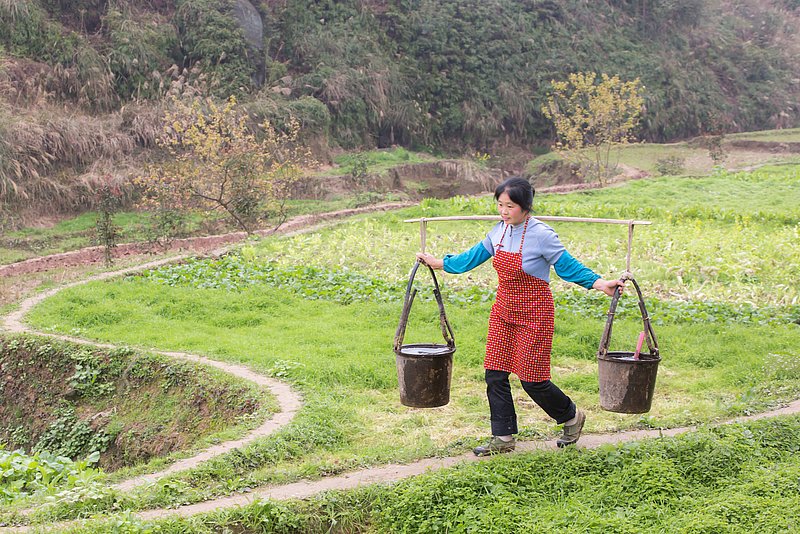
In rural regions of Nepal and the Chinese province of Sichuan, coal or firewood are the main sources of energy. However, these pose significant risks to human health and are an economic and social burden for low-income households. On average, they use around 15 per cent of their income to buy coal. They also collect firewood as an affordable alternative, which is very time-consuming work –usually done by women and children – while at the same time increasing the deforestation rate in the region. Moreover, the combustion process in traditional three-stone fires and outdated stoves is very smoke-intensive and harmful to health. Soot particles and carbon monoxide gas from the fires irritate people’s eyes and respiratory tracts.
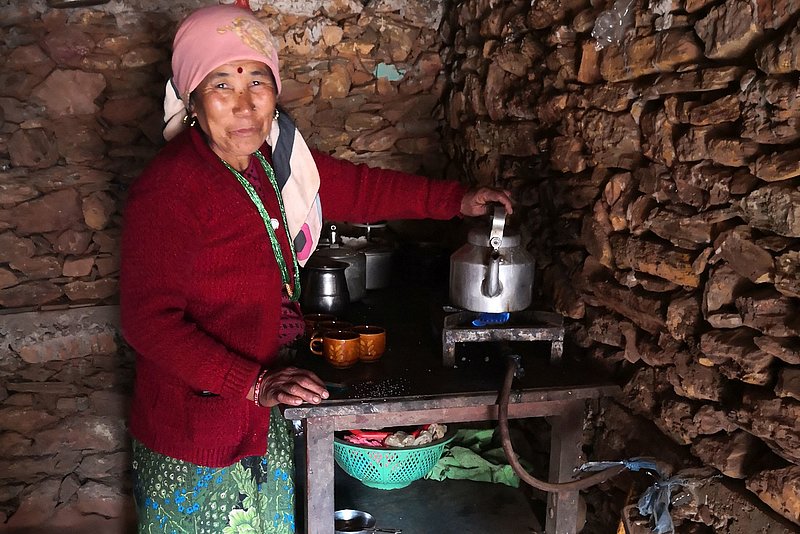
The people are already suffering from the impacts of climate change, such as severe landslides, flooding and soil erosion, which are aggravated by the logging of the forests that provide protection against such damage. In order to improve people’s living conditions while contributing to climate action, the projects supply low-income rural households with reliable and efficient biogas fermenters and stoves. The fermenters are filled with animal manure – usually previously rotted in open pits – and convert it into clean and affordable biogas. This can then easily be used for cooking, heating or lighting. Families now spend less on buying coal and are no longer exposed to hazardous smoke. The risk of suffering burns is reduced.
Women and children in particular benefit from considerable time savings as they no longer need to set aside time to collect firewood. The changeover means each participating family saves on average two to three tonnes of CO2e and several tonnes of firewood year after year. It also means families contribute to controlling soil erosion and preserving biodiversity. After fermentation, the fertile sludge can be used as natural fertiliser and thereby increase agricultural yields cost-effectively. There is also the option of connecting a toilet as a way of improving the hygiene situation. Construction and maintenance of the fermenters creates many local jobs.
Project overview – Household biogas
| Country | Nepal |
| Project title | Nepal Biogas Support Programme PoA |
| Project number | CDM PoA 9572 |
| Project operator | atmosfair gGmbH |
| Special features | PoA, Gold Standard, LDC |
| Cancelled CERs (GIZ) | 35,000 (2019–2020) |
| Country | China, Sichuan province |
| Project title | Sichuan Rural Poor-Household Biogas Development Programme |
| Project number | CDM PoA 2898 |
| Project operator | UPM Umwelt-Projekt-Management GmbH |
| Special features | PoA, Gold Standard |
| Cancelled CERs (GIZ) | 13,308 (2017–2018), 32,500 (2019–2020) |
The positive effects of the project in Nepal on SDGs 3, 7 and 13 have been verified against the Gold Standard for the Global Goals (GS4GG).
The positive effects of the project in Sichuan (China) on SDGs 3, 6, 7, 8 and 13 have been verified against the Gold Standard for the Global Goals (GS4GG).
Efficient stoves reduce deforestation and energy spending
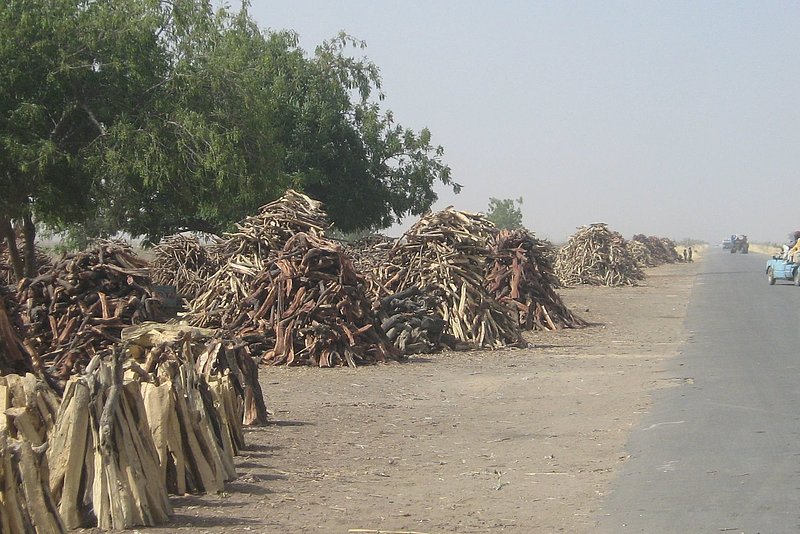
In the project countries on the African continent (Malawi, Mozambique, Nigeria, Rwanda and Zambia), people in rural regions generally use firewood as fuel for cooking. The typical three-stone fires, however, are very inefficient at burning wood. With a family of seven requiring around five tonnes of wood per year, demand for firewood is high, as is the rate of deforestation of the remaining forests. Furthermore, using this type of fuel generates considerable economic strain as it requires low-income households to spend as much as 30 per cent of their income on the purchase of firewood. The project operators produce and sell efficient cookstoves such as the Safe80 together with local partner organisations. These stoves reduce firewood consumption during cooking by as much as 80 per cent.
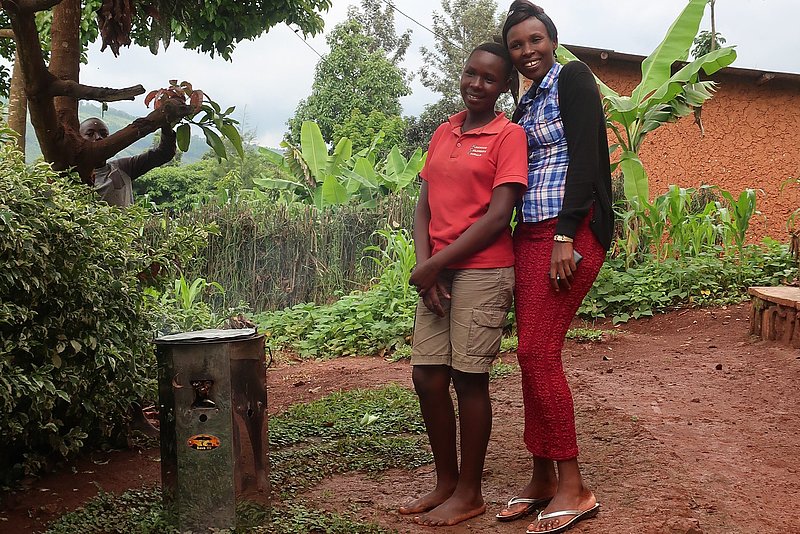
The enormous savings mean the purchase pays for itself in only a few months. Besides, the stoves provide obvious social benefits for human health and gender equality. They allow the wood to burn cleaner, which leads to better air quality and reduces the risk of lung, respiratory and eye diseases. It is better for women and children in particular, who are exposed to hazardous smoke when cooking meals on an open fire. Acceptance among the families is very high. For one thing, the cookstoves save a great deal of time by reducing time spent cooking from around 4 to 2.5 hours a day, and for another, they can be easily integrated into traditional cooking habits. Unlike solar cookstoves, they can be used day and night.
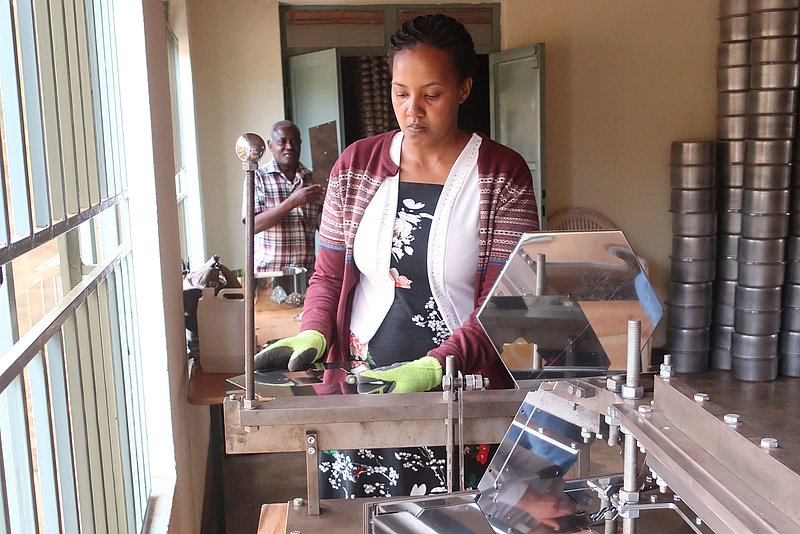
In Nigeria and Rwanda, for example, Safe80 stoves are produced from high-quality stainless steel and would cost around EUR 90 at market prices, an unaffordable price for most households. That is why they are heavily subsidised for the end customers, cutting the price to around EUR 18, which can be paid off in instalments. All sales proceeds go to the partner organisations. The prefabricated materials are currently exported from Germany, while final assembly and sale of the cookstoves is done locally. The entire production chain is to be shifted to the partner countries in the near future in order to further strengthen local value creation. This approach will create attractive jobs (at least half of them for women) and will also benefit the transfer of knowledge and technology.
Project overview – Efficient cookstoves
| Country | Malawi |
| Project title | Improved Cookstoves Programme for Malawi and Cross-border Regions of Mozambique |
| Project number | CDM PoA 9558 |
| Project operator | C-Quest Capital Malaysia Global Stoves Limited |
| Special features | PoA, LDC |
| Cancelled CERs (GIZ) | 20,000 (2017–2018) |
| Country | Zambia |
| Project title | Improved Cookstoves Programme for Zambia |
| Project number | CDM PoA 8060 |
| Project operator | C-Quest Capital Malaysia Global Stoves Limited |
| Special features | PoA, LDC |
| Cancelled CERs (GIZ) | 20,000 (2017–2018) |
| Country | Nigeria |
| Project title | Improved Cookstoves Programme for Nigeria |
| Project number | CDM PoA 5067 |
| Project operator | atmosfair gGmbH |
| Special features | PoA, Gold Standard |
| Cancelled CERs (GIZ) | 22,704 (2019–2020) |
| Country | Rwanda |
| Project title | Improved Cook Stoves Programme for Rwanda |
| Project operator | atmosfair gGmbH |
| Project number | CDM PoA 6207 |
| Special features | PoA, Gold Standard |
| Cancelled CERs (GIZ) | 7,500 (2019–2020) |
The positive effects of the project in Rwanda on SDGs 5, 7, 8 and 13 have been verified against the Gold Standard for the Global Goals (GS4GG).
The positive effects of the project in Nigeria on SDGs 3, 13 and 15 have been verified against the Gold Standard for the Global Goals (GS4GG).
Information on the following Sustainable Development Goals (SDGs) can be found on this page:
